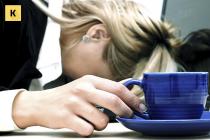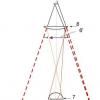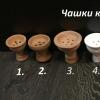Sampling(sampling, sampling) is a marketing campaign for the free distribution of samples, testers, accessories and consumables for the main product. Sampling is a type of sales promotion, through the distribution of test samples of goods, miniature packages to the buyer in order to familiarize themselves with it and provide an opportunity to try it out.
Sampling types:
Dry sampling- the buyer is told about the product, and he takes the sample of the goods (shampoo, cream, perfume) home with a “dry ration”;
Wet sampling– offer consumers to try the product (cheese, juice, sausage, etc.) directly in front of the counter at the point of sale;
Horeca sampling alcoholic drinks and cigarettes in restaurants and bars.
What is the essence of sampling? Dal the opportunity for the consumer to take a sample, while not spending money; to get a taste, to get something for nothing, to get a sample of something - one of the powerful means of promotion. Sampling is one of the common types of sales promotion that is effectively used in the case of the initial or re-launch of a product on the market.
Most often carrying out promotions sampling can be found at the direct points of sale of the products offered. This is due to the fact that most consumers make a purchase decision already at the point of sale of the goods. This means that with successful distribution, the buyer will immediately become interested in a new offer and the so-called spontaneous purchase effect will work. Russian sampling is especially popular and is the best way to attract consumers. The Russian consumer has a number of features, often surprising representatives of Western firms.
How to sum up sampling? And in conclusion, let us dwell on methods for assessing the effect of a sampling action in point of sale. First of all, you need to get measurements of sales volumes on similar days (if sampling is carried out on a weekend, then the average sales volumes on the weekend should be taken as the basis). Next, compare sales on a typical day with sales on the day of the promotion. If the sampling promotion has been adequately prepared, then the increase in sales should be up to twice the amount of pre-promotion sales. It is also worth calculating the cost of selling a unit of product: divide the cost of organizing sampling in the store by the number of units sold. Well, the last evaluation criterion: the profit received from the sale of additional units of products must exceed the costs of organizing and conducting a sampling campaign.
Most of us know that marketing work (sampling is part of it) seems to be the most important element both for launching a new product on the market and for increasing demand for an already available product. Of course, advertising has long been the main tool used by marketers. But it's not always enough for her. In this regard, today many companies resort to such a tool as sampling (promotions for the free distribution of product samples). We offer a closer look at this concept, learning about its purpose, functionality and varieties.
What is sampling?
In short, sampling is a tool by distributing free samples or giving away samples as a bonus with the purchase of any other goods. At the same time, samples can be distributed in a store, delivered to potential consumers, sent by mail, etc. According to many experts, sampling is one of most effective ways promotion of a new product. However, the use of this tool shows excellent results even if it is necessary to increase sales of products that have been on the market for a long time.

When does it make sense to sample?
Among the consumers of your products, the demand for it is not so great, and you plan to improve this indicator.
Do you want to spend marketing research, the purpose of which is to find out how people like your products.

What is good about sampling?
As we can see, sampling is extremely effective tool. After all, a potential buyer is given a unique opportunity to independently study the packaging, its contents, composition, taste, ease of use and other characteristics of the product. And all this is absolutely free. The main advantage here is to attract increased attention to your brand, which makes it possible for the client to switch from a competing product to yours.
Sampling marketing is a unique tool because it allows you to cover a wide variety of product categories. These include food, cosmetics, perfumes, personal care products, pet products, and much, much more.
Moreover, sampling can be carried out not only in the place of direct sale of goods (as, for example, tasting), but also in open areas (streets, parks, etc.). This allows you to reduce costs and difficulties in coordinating the promotion directly with the management of outlets. So, we propose to summarize the advantages of this marketing tool.

Sampling Benefits
The main benefits include:
Attracting increased consumer attention to your product.
The ability to switch the buyer from the products of competing companies to your brand.
Formation of a consumer habit to purchase exactly the product you are promoting.
Building and strengthening a positive image of your brand in the eyes of potential consumers.
Sampling Varieties
There are three main areas of sampling marketing. We invite you to learn more about them.
1. Distribution of product samples. This option assumes that the product is in a package, which allows a potential buyer to take it with them and, if necessary, use it for its intended purpose already at home. This kind of sampling is called dry sampling. You can distribute samples almost everywhere: on the street, in the subway, shopping malls etc. It is interesting that you can see such sampling in maternity hospitals. It would seem that women who are tired after childbirth are not at all up to advertising any goods. However, some companies, mainly offering baby care products, are gifting new moms with a whole range of free product images. If a woman is satisfied with the quality of the product, then it is very likely that in the future she will use the products of this particular brand.

2. Tasting. This type of sampling is called wet sampling. In this case, potential buyers are offered to try the products directly at the points of sale. Thus, the likelihood is increased that if the consumer likes the taste or other characteristics of the product, he will be able to purchase it right there on the spot.
3. Ferret. This type of sampling covers cafes, restaurants and hotels. In this case, as a rule, the following product categories are promoted: coffee, non-alcoholic or alcoholic drinks, cigarettes.

What you need to pay attention to when organizing sampling
In order for the campaign to promote your products to be as successful as possible, the following factors must be taken into account:
- Correct and attractive design of the booth with product samples, as well as training of promoters. Also pay attention to their appearance, because they will represent your product to potential consumers.
- Selection target audience, place and time of the action. Here it is important to calculate when exactly the point of sale is visited by the largest number of your potential customers.
- Be sure to double-check that the store where you plan to distribute free images can buy this product.
- Control the work of promoters. After all, a situation is possible when he simply takes some of the samples for himself, passing them off as handed out.
Types and forms of SAMPLING.
SAMPLING Goals: Win new customers. Retain existing customers. Increase product consumption regular customers as well as by attracting new ones. Encourage customers to use better quality products. Launch and present a new product. Improve relationships with retailers. Expand distribution.
The main forms of SAMPLING: Sampling - the product is packed, you can take it home with you and use it for its intended purpose; Tasting is the direct offering of a small amount of a product for sampling.
Types of SAMPLING: Wet ("wet") sampling (tasting) - the consumer is offered to try the product immediately, most often - directly at the point of sale. Can be used on any food.
Used very widely in practice modern business Psychological impact large enough, with a properly planned campaign, it affects the increase in sales immediately.
Dry ("dry") sampling - the buyer is told about the brand, distinctive features and give a sample of the product, which, if desired, can be tried at home. Used for products such as breakfast cereals, detergents, decorative cosmetics
Distribution of samples can take place on the street, at presentations, discos, etc. Sometimes this can be in the form of direct mail as attachments to subscribed journals.
It is usually resorted to by companies that use a power strategy in the market, i.e. having sustainable financial position and a powerful brand and striving to maintain their impressive market segment through costly promotions.
Horeca (Hotel – Restaurant – Cafe) - sampling in hotels, restaurants and cafes.
Quite widespread in industrialized countries. It usually consists in offering a free tasting of cigarettes, coffee, alcoholic and non-alcoholic drinks, one-time trial services of hairdressers, massage therapists, etc.
House - to - house sampling - (home sampling) - distribution of product samples to familiarize consumers with it and thus stimulate sales.
The main methods here are direct mailing, hanging samples on doorknobs, sealing them in bags with newspapers and magazines, and in packages with goods sent by mail.
Research shows that home-delivered samples are much more likely to be sampled immediately than those handed out at walks.
HOW MARKETERS TRACK INCOME FROM INVESTMENT???
WHAT IS THE BENEFITS OF A CATALOGUE COMPANY WITH A SAMPLING CHANNEL???
Tasting as a kind of SAMPLING: Direct - the prepared product is tested and Dry (without testing the product) - implies informing the buyer about the brand, the method of its use, distinctive features (that is, it is sold only at the point of sale), Arrangement.
TASTING is a method of promotion food products, which is based on the objective factor of human psychology - trust in one's own feelings.
These products should also have the following properties: Targeting of these products at the general consumer; Be the product of frequent repeat sales to the same persons; Be a low cost product.
In doing so, traditional questions should be answered: What is the purpose? Where and when are promotions held? What should shoppers taste? How and who should carry them out?
Tastings and distribution of samples fit harmoniously into the “pull” communication strategy. Its goal is to create a favorable attitude towards the product at the level of final demand, encouraging intermediaries to be forced to cooperate with manufacturers.
Tastings can also be considered as a mechanism for investing in the IMAGE of the manufacturer's enterprise and its trademark, pursuing the goal of creating the IMAGE of the brand and acquiring FAMILY CAPITAL.
Based on the results of the promotions, a monthly report is provided containing: Primary information for marketers; Information about the dynamics of sales volumes, before tasting; Dynamics of sales volumes during the tasting; Change in dynamics 2 weeks after the action.
Submit your application
Sampling
Modern marketing is a complex set of activities related to the introduction of a new product to the market of goods or an increase in demand for existing products. Of course, the most bought and effective method Gathering a new target audience is a well thought out advertisement. But it is not always enough. Then you can connect the most powerful element of marketing - sampling - to the battle.
What is sampling? The most common meaning of this word is a free or additional sample given as a bonus when buying another product. The best time to introduce sampling into your marketing plan is:

- introduction of new products or trademark, which is ready to compete with other representatives of a similar segment;
- increasing interest among the target audience;
- conducting analytical research among existing customers or potential new customers.
Using such an advertising tool, you allow future customers to build confidence in your company, thanks to their own study of packaging, content and composition of products. At the same time, sampling is well suited for both large manufacturing companies and small companies. Regarding the types of products - this tool is ideal for all categories of goods.

Order sampling in Moscow
Most best performance work with sampling campaigns can be seen in collaboration with real marketing professionals. Popular will help you with this. advertising agency Moscow "Promo people". We will put at your disposal a staff of trained analysts,














